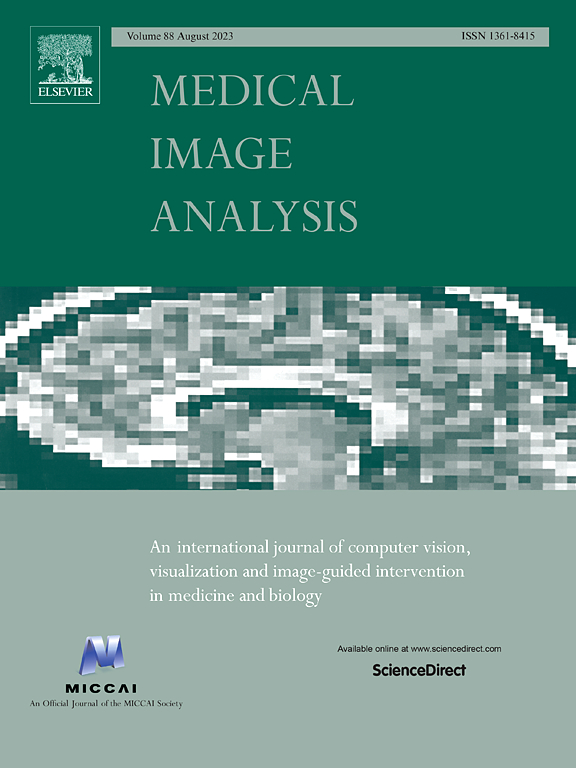Enhancing lesion detection in automated breast ultrasound using unsupervised multi-view contrastive learning with 3D DETR
IF 10.7
1区 医学
Q1 COMPUTER SCIENCE, ARTIFICIAL INTELLIGENCE
引用次数: 0
Abstract
The inherent variability of lesions poses challenges in leveraging AI in 3D automated breast ultrasound (ABUS) for lesion detection. Traditional methods based on single scans have fallen short compared to comprehensive evaluations by experienced sonologists using multiple scans. To address this, our study introduces an innovative approach combining the multi-view co-attention mechanism (MCAM) with unsupervised contrastive learning. Rooted in the detection transformer (DETR) architecture, our model employs a one-to-many matching strategy, significantly boosting training efficiency and lesion recall metrics. The model integrates MCAM within the decoder, facilitating the interpretation of lesion data across diverse views. Simultaneously, unsupervised multi-view contrastive learning (UMCL) aligns features consistently across scans, improving detection performance. When tested on two multi-center datasets comprising 1509 patients, our approach outperforms existing state-of-the-art 3D detection models. Notably, our model achieves a 90.3% cancer detection rate with a false positive per image (FPPI) rate of 0.5 on the external validation dataset. This surpasses junior sonologists and matches the performance of seasoned experts.
求助全文
约1分钟内获得全文
求助全文
来源期刊

Medical image analysis
工程技术-工程:生物医学
CiteScore
22.10
自引率
6.40%
发文量
309
审稿时长
6.6 months
期刊介绍:
Medical Image Analysis serves as a platform for sharing new research findings in the realm of medical and biological image analysis, with a focus on applications of computer vision, virtual reality, and robotics to biomedical imaging challenges. The journal prioritizes the publication of high-quality, original papers contributing to the fundamental science of processing, analyzing, and utilizing medical and biological images. It welcomes approaches utilizing biomedical image datasets across all spatial scales, from molecular/cellular imaging to tissue/organ imaging.
 求助内容:
求助内容: 应助结果提醒方式:
应助结果提醒方式:


